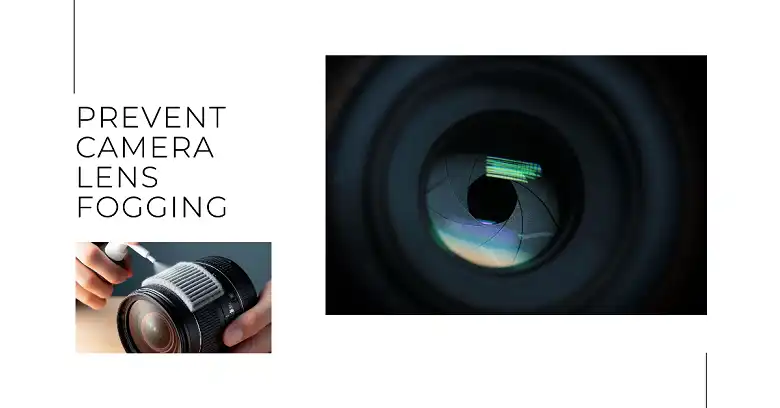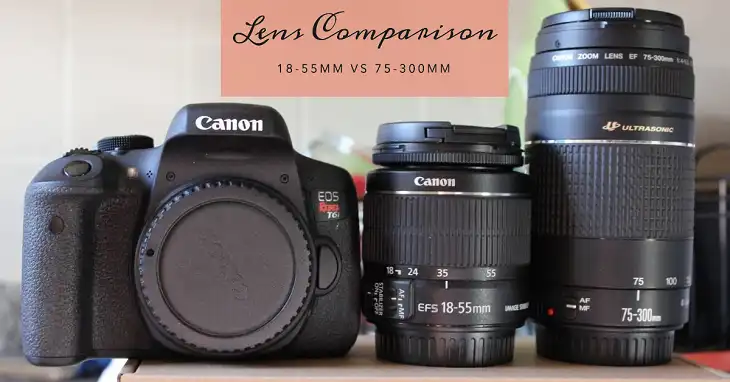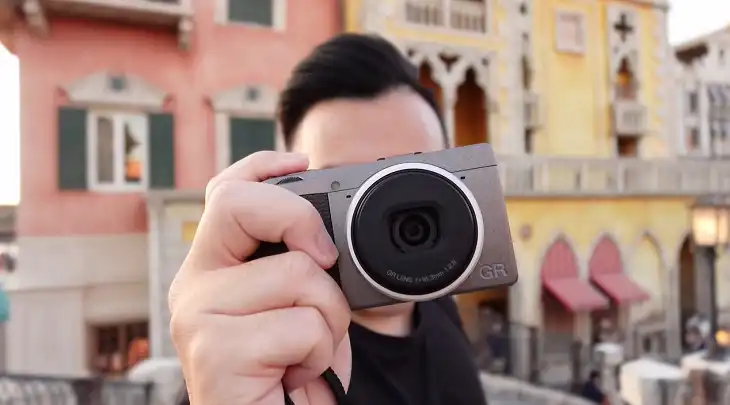How to Prevent Camera Lens from Fogging?
Have you ever witnessed the disappointment of lifting your camera to capture a breathtaking scene, only to find the lens fogged up? Condensation, the culprit behind this frustrating phenomenon, occurs when warm, humid air meets a cool surface like your camera lens. As the moist air cools, water droplets form, obscuring your shot with an annoyingly blurry haze.
Preventing camera lens fogging takes proper acclimatization, moisture control, temperature management, and the right preventative measures.
The impact of fogging extends beyond just ruining your images. It can lead to missed opportunities, wasted time, and utter frustration, especially in scenarios like outdoor adventures, travel photography, or underwater explorations. Therefore, in this article, I will tell you how to prevent fogging and how to fix a lens that’s already fogged up. Let’s begin.

Preventing Camera Lens from Fogging
The best defense against lens fogging is a well-executed prevention strategy. Here’s how to outsmart the fog and keep your camera ready for action:
Acclimatization
Sudden temperature changes are a surefire way to trigger condensation. Avoid this by allowing your gear to acclimatize gradually. When moving between environments with significant temperature differences, keep your camera gear in an insulated bag or pouch for at least 30 minutes to an hour before exposing it.
For extreme conditions, consider using hand warmers or specialized insulated pouches to maintain a stable temperature during the acclimatization process.
Moisture Control
Keeping moisture at bay is crucial. Start by investing in a weather-sealed camera body and lenses if your budget allows. While not a complete solution, these can provide an extra barrier against humid environments.

Silica gel packets are a photographer’s best friend when it comes to absorbing excess moisture. Toss a few into your camera bag, but remember to reactivate or replace them regularly as they lose effectiveness over time.
Lens filters can also act as a protective barrier, but be mindful of potential image quality degradation, especially with cheaper filters.
Temperature Management
Regulating the temperature of your gear is another key strategy. Hand warmers are a versatile tool – just be cautious about placing them directly on your camera or lenses, as excessive heat can damage the equipment. Instead, consider placing them near (but not touching) your gear inside an insulated pouch or camera bag.
In certain situations, you can even use your body heat strategically. Tuck your camera under your jacket or close to your body to maintain a stable temperature, but be very careful not to overheat or expose it to excessive moisture from perspiration.
For astrophotographers battling freezing temperatures, lens heaters can be a game-changer, but they’re often bulky and may interfere with your setup, so weigh the pros and cons carefully.
Preventative Measures
Anti-fog wipes or sprays can provide a temporary solution by creating a barrier on your lens surface. However, their effectiveness is limited, and some products may leave residues or cause issues with lens coatings, so use them with caution.
A simple lens hood can work wonders in protecting your glass from wind, stray light, and moisture. It’s an inexpensive yet effective preventative measure every photographer should embrace.
Finally, proper camera bag storage is crucial. Keep your gear in a well-ventilated, dry environment to minimize moisture buildup.
Fixing a Fogged Camera Lens: When Prevention Fails
Despite your best efforts, fog may still strike. When it does, act quickly with these tactical maneuvers:
Quick Fixes
If you notice fogging starting to form, try gently blowing warm air from your mouth onto the lens surface. The warmth can help evaporate the condensation, but be careful not to breathe directly onto the glass, as your moist breath could make matters worse.

A high-quality microfiber cloth can also help by carefully wiping away moisture without scratching the lens. In a pinch, you can even use your body heat by cupping the lens with your hands for a short period, but avoid excessive or prolonged contact to prevent overheating or moisture transfer.
As a last resort, some photographers swear by the “rice sock trick.” Simply place your gear in an airtight container or bag with a few handfuls of uncooked rice, which will absorb moisture over time. However, this method is risky and should only be used in emergencies, as rice grains can potentially scratch your equipment.
Long-Term Solutions
If fogging persists, seek shelter and allow your gear to acclimatize gradually. This may mean postponing your shoot until conditions improve, but it’s better than risking damage to your equipment or missing the shot altogether.
In persistent humid environments, silica gel packets or anti-fog sprays can provide temporary relief, but they’re not a permanent fix. Be mindful of their limitations and potential side effects.
In extreme cases, you may need to consider alternative lenses or gear better suited for the conditions. For example, waterproof housings or purpose-built underwater cameras can be invaluable for diving or beach photography.
Post-Shooting Camera Lens Care
Even after a successful fog-free shoot, proper post-care is essential. Gently clean your lenses with a high-quality lens cleaning solution and a microfiber cloth, removing any residual moisture or contaminants.

Store your gear in a dry, temperature-controlled environment to prevent future fogging issues. Silica gel packets can help absorb moisture during storage, but remember to regenerate or replace them regularly.
Preventing Fogging in Specific Situations
While the general principles of fog prevention apply across the board, certain scenarios present unique challenges:
How to prevent camera lens from fogging at night
Nighttime environments often involve significant temperature drops, increasing the risk of condensation. Proper acclimatization is key, but you may also want to consider using hand warmers or insulated pouches to maintain stable gear temperatures.
How to keep camera lens from fogging in cold weather
Cold weather is a prime culprit for fogging, as the temperature difference between your warm camera and the frigid air can trigger rapid condensation. Gradual acclimatization, silica gel packets, and even lens heaters can help mitigate the issue.
How to keep camera lens from fogging up at the beach

Beach environments present a double whammy of high humidity and rapidly changing temperatures as you move between air-conditioned spaces and the outdoors. Weatherproof gear, silica gel packets, and meticulous post-shooting care are essential.
How to keep camera lens from fogging in humidity
High humidity is the perfect breeding ground for fogging. In these conditions, focus on moisture control strategies like silica gel packets, weather-sealed gear, and proper storage. Anti-fog wipes or sprays can provide temporary relief, but you’ll need to be diligent in reapplying them.
Troubleshooting
Even with all the knowledge and preparation, issues may still arise. Here are some common troubleshooting tips and frequently asked questions:
My lens keeps fogging up immediately after taking it out of my camera bag. What can I do?
This is likely due to a significant temperature difference between your gear and the environment. Allow more time for gradual acclimatization, and consider using insulated pouches or hand warmers to stabilize the temperature during the transition.
I’ve tried everything, but my lens still fogs up occasionally. Is there a permanent solution?
Unfortunately, there is no one-size-fits-all permanent solution for lens fogging. Different environments and conditions will require different strategies. The key is to understand the root causes and be prepared to adapt your approach as needed.
Can I use a hairdryer or other heat source to defog my lens quickly?
We strongly advise against using direct heat sources like hairdryers on your camera gear, as excessive heat can damage sensitive components and coatings. Stick to gentle warming techniques like your breath or body heat, and allow for gradual acclimatization whenever possible.
Is it safe to use compressed air cans to blow away moisture on my lens?
Compressed air can be effective for removing light condensation, but be very careful. Use short bursts from a safe distance, as the propellant can potentially cause damage or leave residue if used excessively or at close range.
Summing Up
Conquering lens fogging is an ongoing battle, but with the right knowledge and strategies, you can emerge victorious. Remember, prevention is key, but even when fogging strikes, act swiftly and adapt your approach to the specific situation.
Don’t be afraid to experiment and find what works best for your shooting style and environment. With dedication and a willingness to learn, you’ll soon be capturing crystal-clear images, free from the frustration of foggy lenses.






